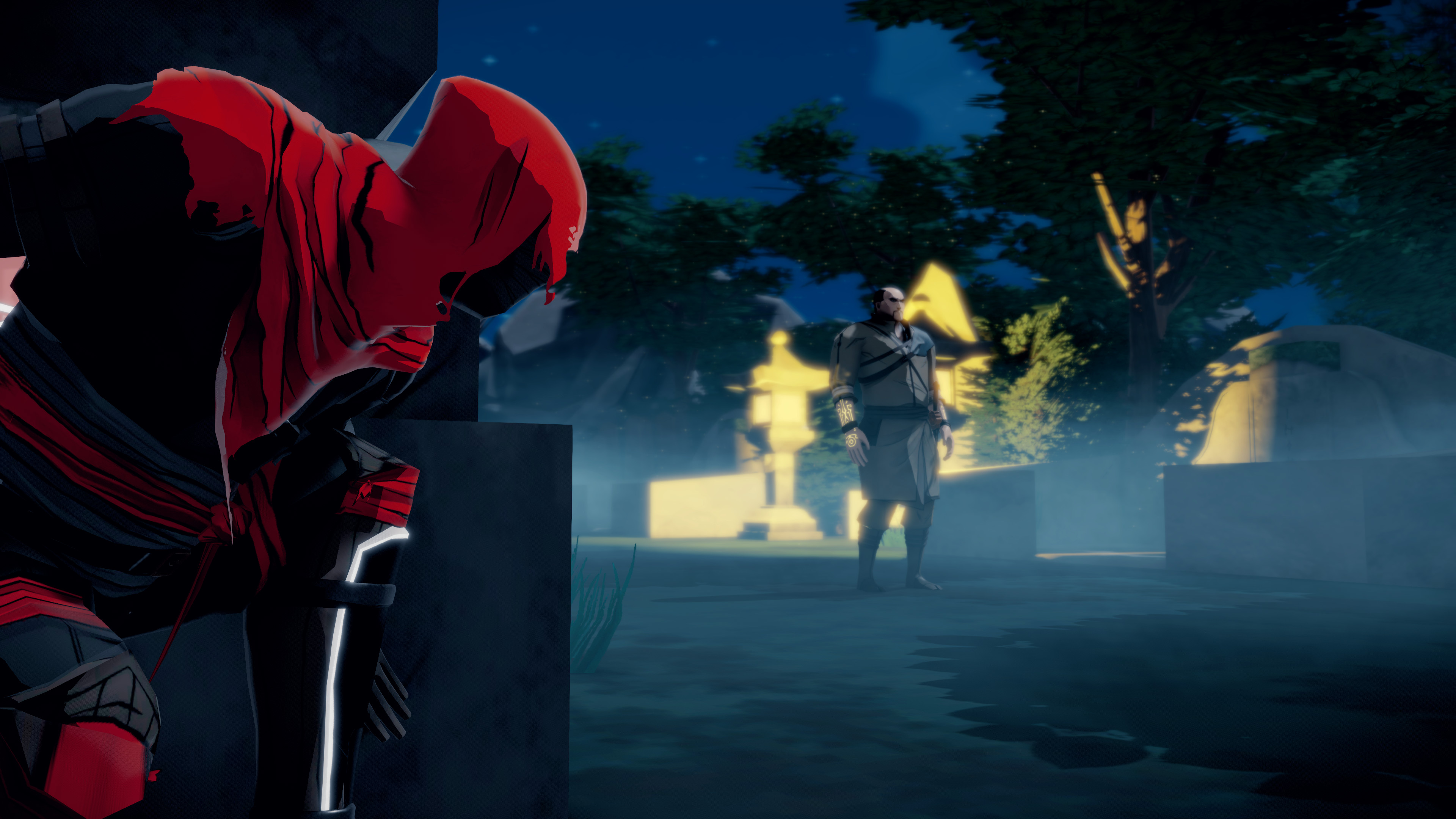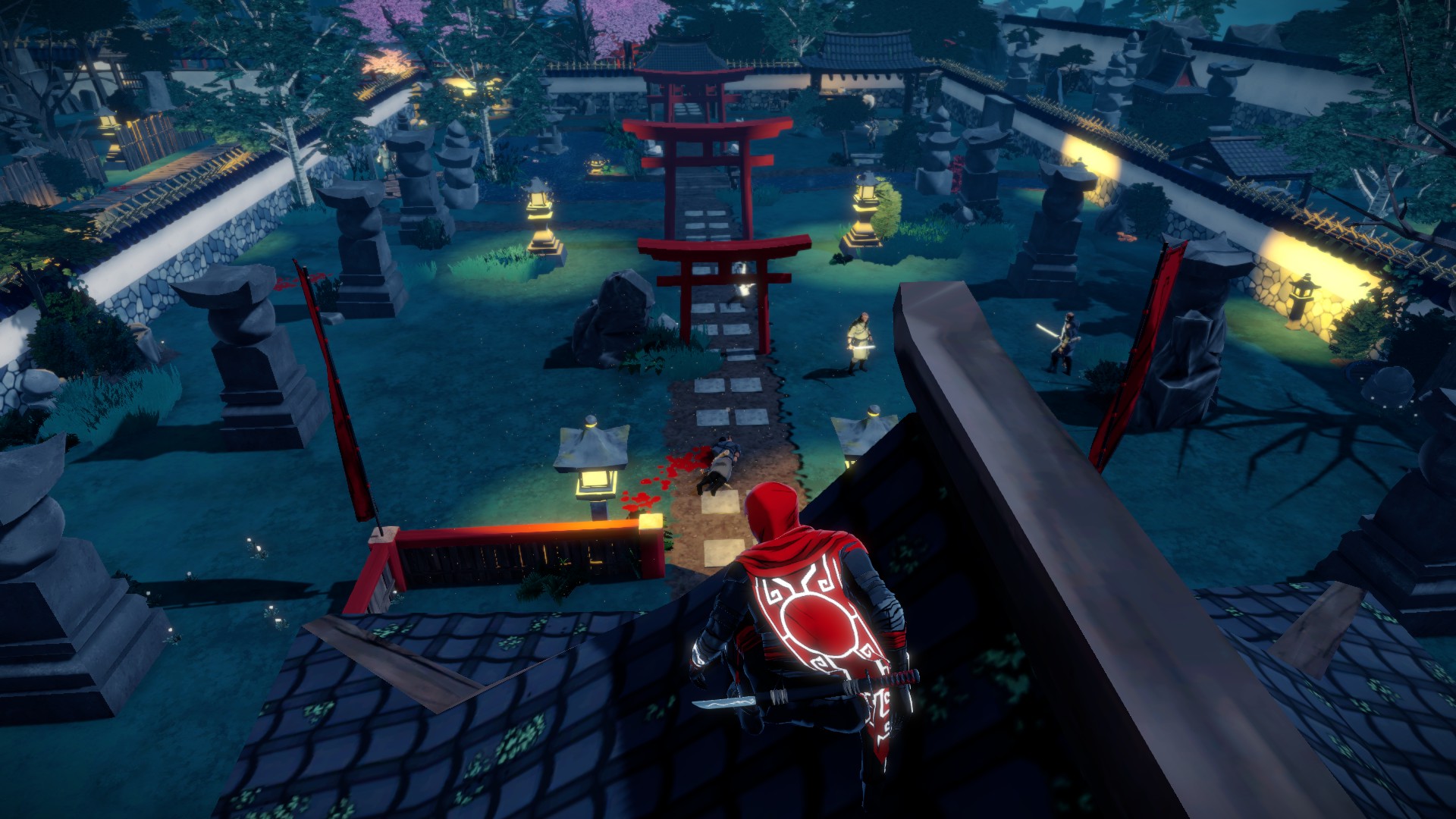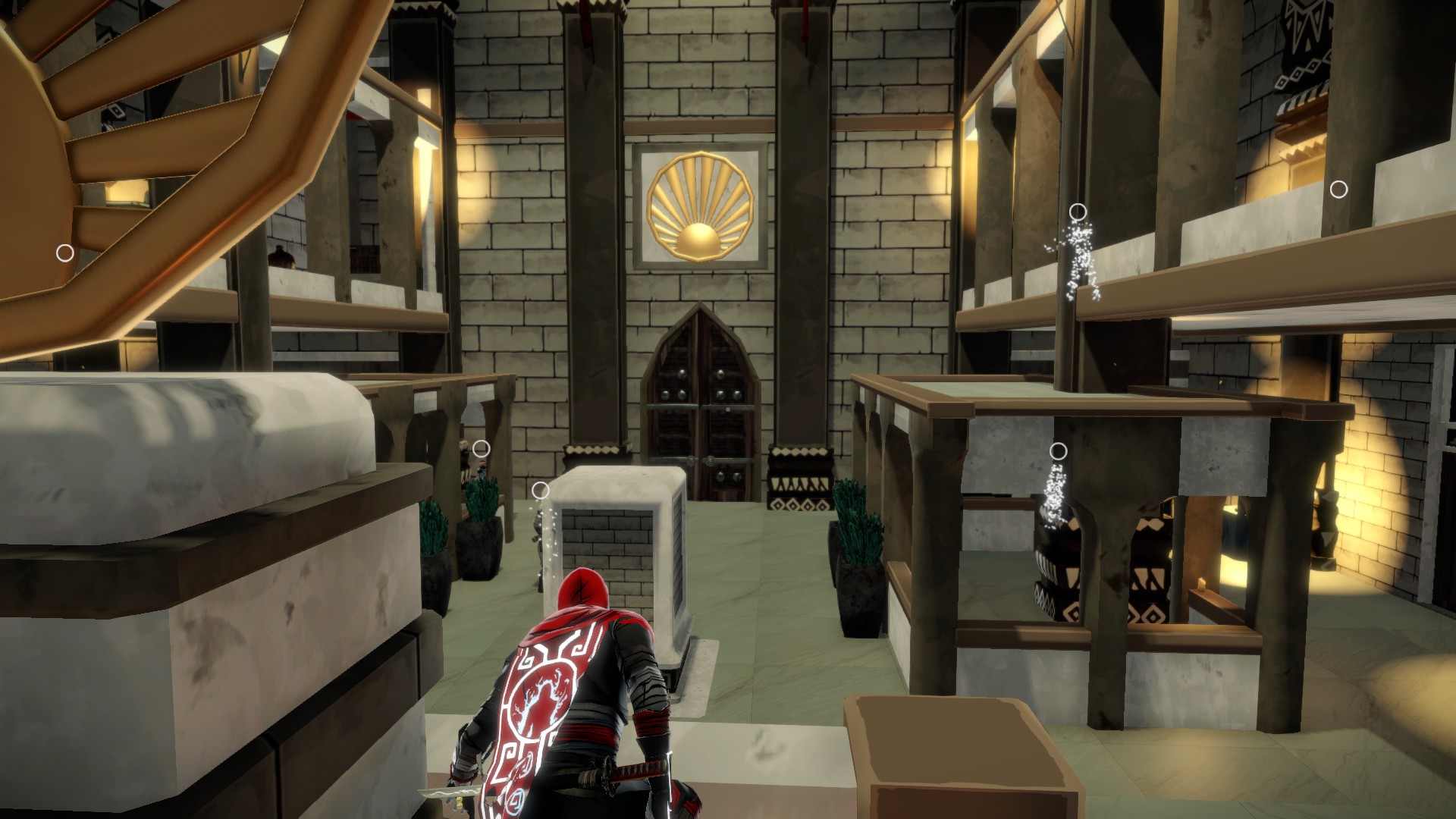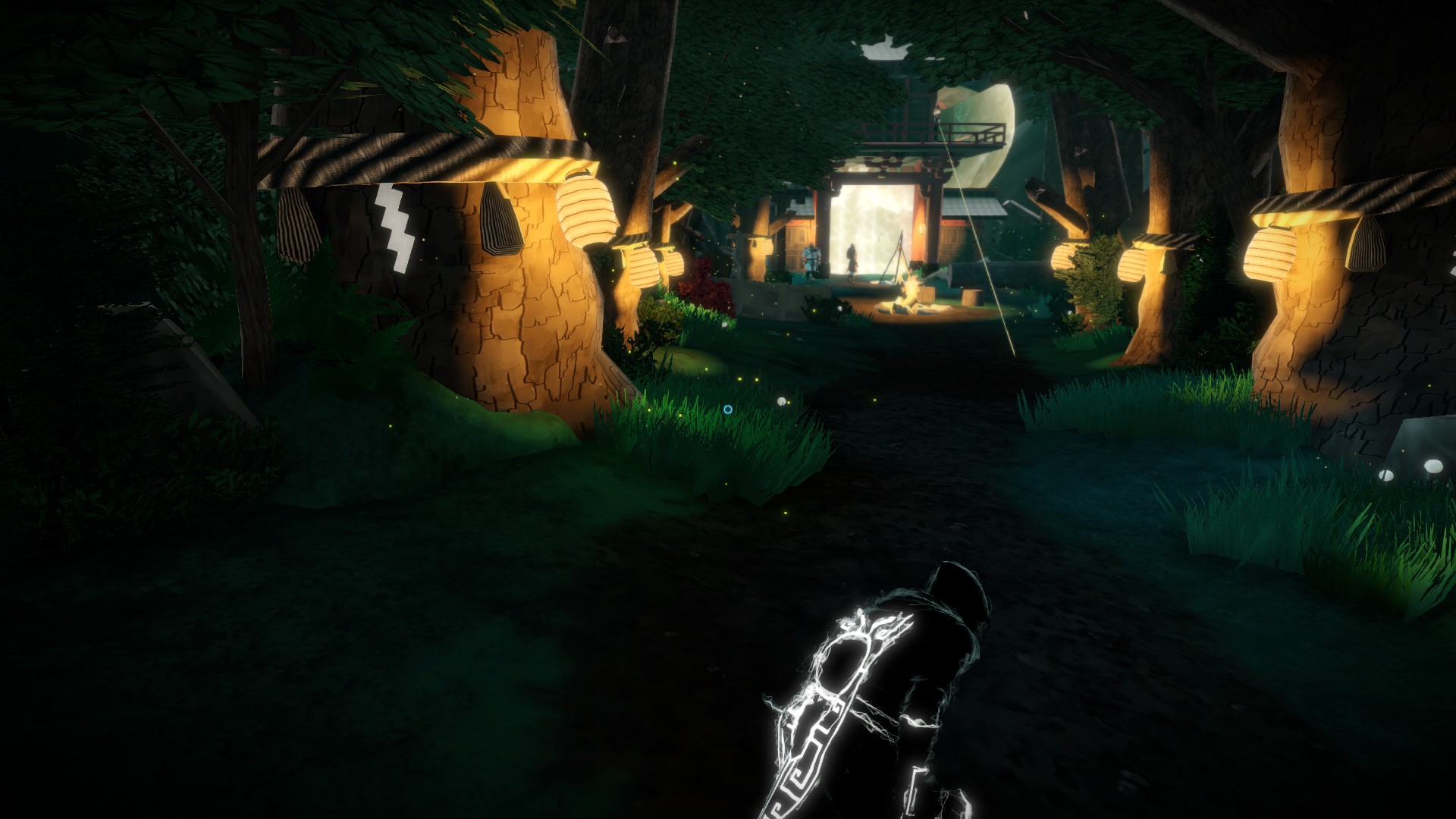How Aragami's teleporting ninja assassinations gets stealth wrong
Borrowing mechanics from good stealth games doesn't always make for good stealth.

Patience is the thing in stealth games. You're hiding in a pool of shadow, waiting for a patrol to pass. You're creeping up on a guard from behind. You're lurking on a rooftop, lining up an attack as your victim exits the building. They're games about patiently waiting for the perfect moment, so when they fray that patience, when they betray the time you've spent skulking in their shadows, they're uniquely frustrating. Aragami, Lince Works’ Japanese-themed stealth game released on PC last week, pulls my patience apart like it's peeling slow-cooked meat off a bone.
Aragami is about an undead ninja assassin with shadow powers, summoned to rescue a lady from the “light adepts” and to collect some talismans to break the spell she’s under. It's slowly revealed that the character using necromantic shadow magic might not to be the nicest, while the dudes with light powers maybe aren't that evil, to the surprise of no one.
It is a very pretty game, with pink cherry blossoms, orange Japanese lanterns, and red-framed pagodas all over, but if you're expecting “Tenchu but on PC” or “Mark of the Ninja but 3D” you'll be disappointed, because Aragami just doesn't get what makes stealth fun.
Powers, get your unlockable powers here
Aragami is a ninja whose powers include Shadow Leap, which lets him teleport about the place. It's like Blink from Dishonored right down to the blue arrows marking ledges you can climb with it, but Shadow Leap can only be used to hop from one shadow to another. To ensure you make full use of this power, there's no other way to climb. To cross a barrier you wait in the shadows till your powers recharge, use one power to create a new shadow where you want to go and then another to leap to it. There's no jump button. Aragami is a ninja who has to use magic powers to cross a knee-high barrier.
You're forced to use powers in almost every situation. You can't open doors and have to Shadow Leap through gaps in them, can't draw your sword outside of pre-canned kill animations, can't dispose of bodies unless you've bought the power that lets you dissolve them. That last power doesn't work in brightly lit areas and if you kill a guard standing next to a lantern you have to just leave him there because there's no way to pick up bodies and drag them out of the light.

Dishonored had a similar wheel of powers to use, but apart from the bit where you have to Blink across the Void you always had the option to not use them. There's even an achievement for finishing Dishonored without buying or upgrading any of those abilities. Aragami doesn't give you that choice because its toolkit is too shallow. They say when all you have is a hammer every problem looks like a nail, but even that hypothetical hammer-wielder doesn't have to balance on their hammer like a pogo-stick to get to the next nail.
Freedom of choice is the thing. I know I said patience is the thing, but in stealth games freedom of choice is also very much the thing. There are two things, and Aragami doesn't do either of them right.
The biggest gaming news, reviews and hardware deals
Keep up to date with the most important stories and the best deals, as picked by the PC Gamer team.
Save us from savepoints
Aragami is broken up into arenas with multiple objectives in them—light barriers that have to be broken, talismans to collect, and so on—and a checkpoint at the start of each arena. There's no manual saves, and it only takes one hit from the guards' magic light weapons to kill you.
Mark of the Ninja was another stealth game that relied on checkpoints, but was much more generous with them, and even there they were occasionally annoying. In Aragami the checkpoints are a constant frustration, pushing you back to the start of a level you were just about to finish so you can listen to the same lines of introductory dialogue, re-enter the area, and defeat the dopey guards by the entrance before getting back to the challenging bit again. Or the challenging bit after that, or the one after that—whichever one actually killed you last time.
Alien: Isolation is a stealth game that makes great use of savepoints, forcing you to power up a machine while standing vulnerable in the open every time you want to save. Crucially, you have the choice of when you use them. You can double back whenever you want. Aragami's automatic checkpoints don't give you that option: they force you to replay each arena in full until you get it right.

Sometimes it's said that quicksaves reduce the tension in a game, but I'm not so sure. The PC version of Silent Hill 2 added a save-anywhere option, but was just as scary as the console original. The famous 'Shalebridge Cradle' level of Thief: Deadly Shadows is no less scary because you can press F10 any time you like.
What really does away with tension is repetition. Repeating the same actions over and over in Aragami sucked all the tension out of it as efficiently as those hoses surgeons use to get blood out of wounds.
“No capes!”
Aragami wears a bright red hood and cape a bit like the characters from Journey, which turns black when he's in the dark. It also glows to tell you how much shadow power he's absorbed. However, thanks to the cloth physics it's often tangled up in his feet or off to the side wrapped round his sword where you can't see it. Having a meter on the character's back (as if Aragami is a shadow-wizard ninja version of that guy from Dead Space) prevents an ugly HUD from potentially detracting from what is a very lush-looking game, but I'd rather just have a readable icon even if it isn't as pretty.
On the subject of readability, the powers that let you mark enemies, see them through walls, and mark their vision cones feel like obligatory but unnecessary elements of modern stealth games. Their presence suggests a lack of confidence in the ability of a game's animations and sound design to keep you informed of what's going on. That's a sin common to almost every stealth game after Batman: Arkham Asylum, rather than something peculiar to Aragami. I like Arkham Asylum, but it cursed us with a generation of stealth games that have Detective Vision and boss fights. (Aragami also has boss fights, of course.)

Aragami's the kind of game whose flaws are educational. Everything it does wrong is something we can learn from. I don't point out these flaws to be mean, but in the hope they aren't repeated. Many of its problems are inherited, the kind of unquestioned design ideas that spread across genres because a couple of good games got away with them—in this case mainly Dishonored and Arkham Asylum. We gave them a pass because their settings had depth, because their traversal systems made simply moving through them feel good, because they provided options for how to succeed. And even when we screwed up they made failure fun.
If Aragami achieved those things many of its problems would be forgivable, but since it doesn’t they stand out and beg to be fixed. Plenty of games are grown on the grafted trunks of previous successes, but for that to work, you can't ignore the branches that need to be pruned back.

Jody's first computer was a Commodore 64, so he remembers having to use a code wheel to play Pool of Radiance. A former music journalist who interviewed everyone from Giorgio Moroder to Trent Reznor, Jody also co-hosted Australia's first radio show about videogames, Zed Games. He's written for Rock Paper Shotgun, The Big Issue, GamesRadar, Zam, Glixel, Five Out of Ten Magazine, and Playboy.com, whose cheques with the bunny logo made for fun conversations at the bank. Jody's first article for PC Gamer was about the audio of Alien Isolation, published in 2015, and since then he's written about why Silent Hill belongs on PC, why Recettear: An Item Shop's Tale is the best fantasy shopkeeper tycoon game, and how weird Lost Ark can get. Jody edited PC Gamer Indie from 2017 to 2018, and he eventually lived up to his promise to play every Warhammer videogame.

